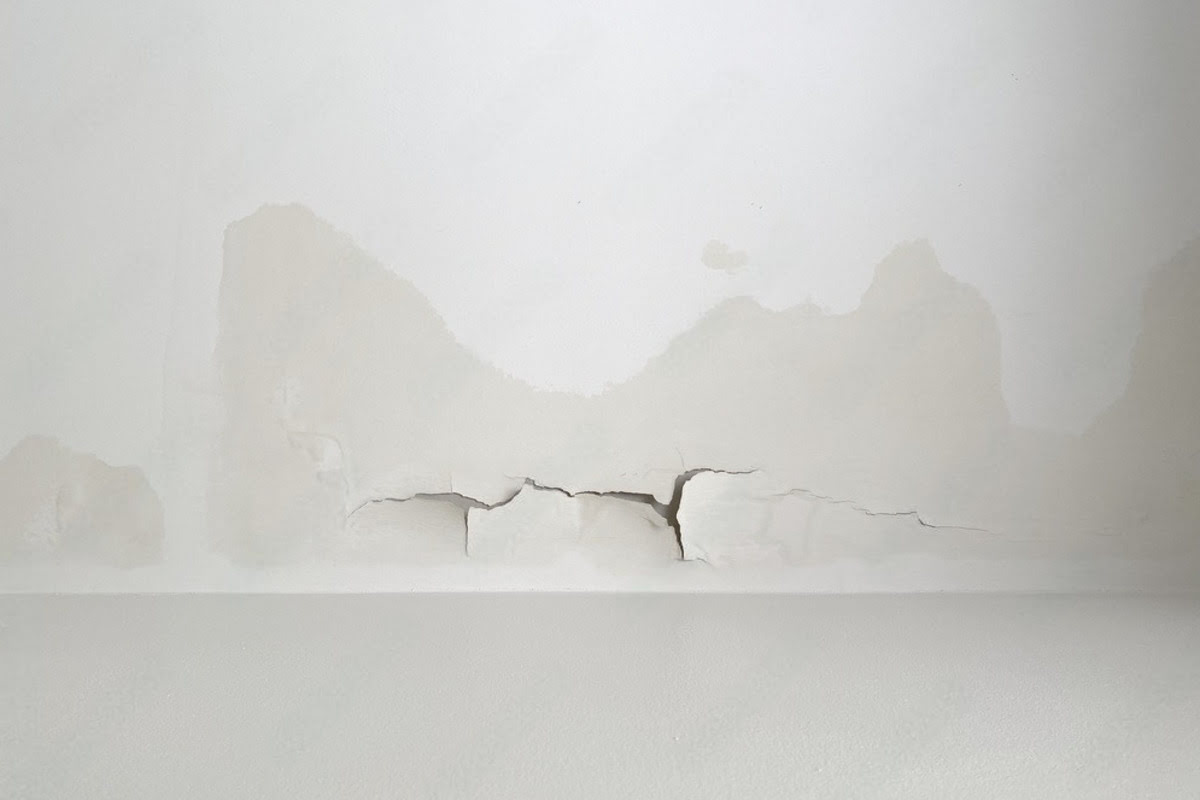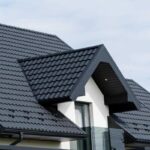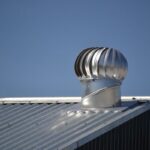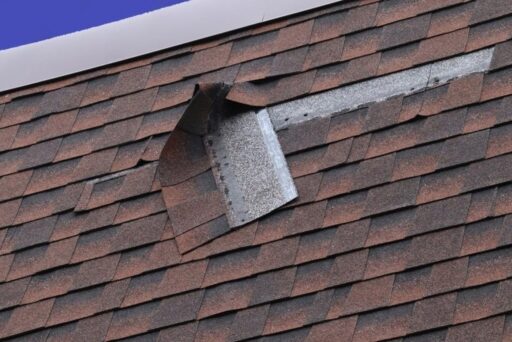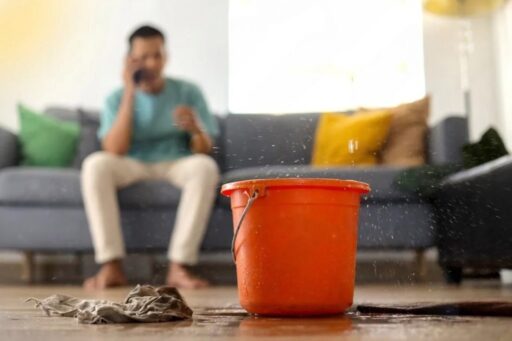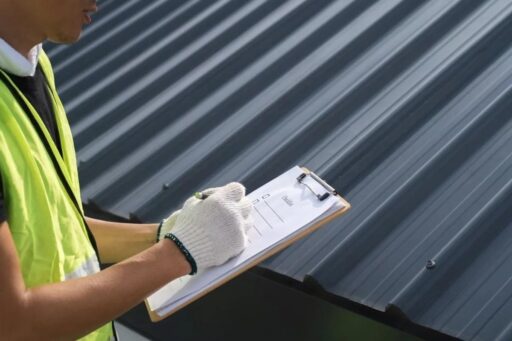A leaky roof is more than just a minor inconvenience; it’s a homeowner’s nightmare that can lead to significant damage and costly repairs if left unchecked. According to the Canadian Roofing Contractors Association, water damage from roof leaks costs homeowners billions of dollars annually. This staggering figure underscores the importance of early detection and prompt repair. Roof leaks can occur for various reasons, including age-related wear and tear, severe weather events, poor installation, or inadequate maintenance. Learning how to repair roof leak issues early can save you a lot of trouble.
Recognizing Signs of a Roof Leak
Early detection is key to minimizing damage and repair costs. Catching a leak in its early stages can mean the difference between a simple, inexpensive repair and a major renovation project. However, roof leaks can be tricky to spot, often causing damage for weeks or even months before becoming apparent. That’s why it’s crucial for homeowners to be vigilant and know what signs to look for. Here are the tell-tale signs of a roof leak to watch out for:
Interior Signs:
- Water Stains: Look for brown, yellow, or copper-coloured stains on ceilings and walls, especially after heavy rain or snowmelt. These stains often start small and grow over time as more water seeps in. They may appear as rings or irregular shapes, depending on how the water is spreading. Don’t ignore even small stains, as they can indicate a larger problem above and may require roof leak repair.
- Peeling Paint: Moisture can cause paint to bubble, crack, or peel. This is particularly noticeable on ceilings and upper portions of walls. As water seeps into the drywall or plaster, it can cause the paint to lose adhesion. In some cases, you might notice small blisters forming in the paint before it starts to peel.
- Dripping Sounds: Pay attention to any unexplained dripping noises, particularly during or after rainfall. These sounds might be intermittent and can be easy to miss, so it’s worth taking the time to listen carefully, especially in rarely used rooms or when the house is quiet.
- Damp Spots: Feel walls and ceilings for any unusual dampness. Even if you can’t see visible water stains, you might be able to detect moisture by touch. Pay particular attention to corners and areas around windows, as these are common entry points for water.
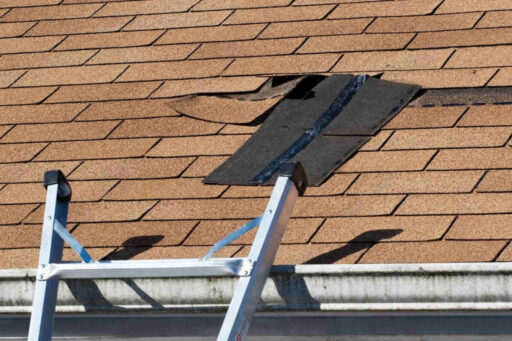
Attic Inspection:
- Water Stains: Check the underside of the roof decking for dark spots or visible water trails. In the attic, these stains might appear on the wood itself rather than on painted surfaces. Look for any discolouration or darkening of the wood, which can indicate water penetration.
- Damp Insulation: Wet or compressed insulation is a clear indicator of water infiltration. Insulation should be dry and fluffy. If you notice areas where it’s matted down or feels damp to the touch, this is a strong sign of a leak. Remember that water can travel along rafters or trusses before dripping onto insulation, so the source of the leak might not be directly above the wet spot.
- Mould Growth: Black or dark green spots on wood surfaces suggest prolonged moisture exposure. Mould can start growing within 24-48 hours of water exposure, so its presence indicates an ongoing moisture problem. Be cautious when inspecting for mould, as some types can be harmful to your health. If you suspect extensive mould growth, it’s best to call in a professional for safe inspection and roof leak repair.
- Sunlight Penetration: On a sunny day, look for any spots where sunlight is penetrating through the roof. If light can get in, so can water. This method can help you spot small holes or gaps that might be allowing water to enter.
Structural Changes:
- Sagging Ceilings: A drooping or bulging ceiling can indicate water accumulation above. This is a serious sign that requires immediate attention, as it could lead to ceiling collapse if left unaddressed. If you notice any part of your ceiling beginning to sag or bow, evacuate the area and call a professional immediately.
- Warped Flooring: In extreme cases, water may travel down walls and affect upper-storey flooring. Look for any unexplained buckling, cupping, or softening of wood floors, or separation and curling of vinyl or linoleum flooring.
- Doors and Windows: Water infiltration can cause wooden door and window frames to swell, making them difficult to open or close properly. If you notice sudden changes in how your doors or windows operate, especially on upper floors, it could be a sign of water damage from a roof leak.
Exterior Signs:
- Missing or Damaged Shingles: Regular roof inspections can reveal obvious weak points. Look for shingles that are cracked, curled at the edges, or missing entirely. Each of these issues can allow water to penetrate the roof’s surface. Pay special attention to areas around chimneys, vents, and other roof penetrations, as these are common trouble spots.
- Cracked Flashing: Examine the thin metal strips around chimneys, vents, and roof edges for damage. Flashing is designed to create a water-tight seal at these vulnerable points, but it can deteriorate over time or become damaged by severe weather. Look for any signs of rust, gaps, or areas where the flashing has pulled away from the roof or chimney.
- Clogged Eavestroughs: Backed-up eavestroughs can force water under shingles, leading to leaks. Regularly clean your eavestroughs and downspouts to ensure proper water drainage. During your inspection, look for any signs of water overflow, such as water stains on the exterior walls below the eavestroughs.
- Granules in the Eavestroughs: If you notice an excessive amount of granules (the sandpaper-like substance on asphalt shingles) in your eavestroughs or at the base of downspouts, it could indicate that your shingles are deteriorating. As shingles age and lose these protective granules, they become more susceptible to water penetration.
Unexplained Utility Costs:
- Increased Energy Bills: If your heating or cooling costs spike unexpectedly, a hidden leak affecting insulation could be the culprit. Compare your current bills to those from the same period in previous years. A sudden increase that can’t be explained by changes in energy prices or usage patterns might indicate that your insulation has been compromised by a leak, reducing your home’s energy efficiency.
- Unusual HVAC Performance: If your heating or cooling system seems to be working harder than usual to maintain a comfortable temperature, it could be due to compromised insulation from a roof leak. Pay attention to how often your system cycles on and off, and whether it’s able to maintain a consistent temperature throughout your home.
A leaky roof is more than just a minor inconvenience; it’s a homeowner’s nightmare that can lead to significant damage and costly repairs if left unchecked. According to the Canadian Roofing Contractors Association, water damage from roof leaks costs homeowners billions of dollars annually. This staggering figure underscores the importance of early detection and prompt repair. Roof leaks can occur for various reasons, including age-related wear and tear, severe weather events, poor installation, or inadequate maintenance. Regardless of the cause, the consequences can be severe and far-reaching, affecting not just the roof itself but potentially compromising the entire structure of your home. Therefore, learning how to repair roof leak issues effectively is crucial.
The Water Test: When Visual Inspection Isn’t Enough
If you’re unable to locate the leak through visual inspection alone, consider performing a water test:
- Enlist a Helper: Have someone stay inside the attic while you (or another person) use a garden hose to saturate different roof sections.
- Start Low: Begin at the lowest part of the roof, working your way up in sections. This methodical approach helps isolate the problem area more effectively.
- Be Patient: Water may take several minutes to appear inside, so thoroughly soak each area for at least 5 minutes before moving on. This patience is crucial, as some leaks only manifest under prolonged exposure.
- Mark the Spot: Once water appears inside, mark both the interior and exterior locations to guide your repair efforts. Use a waterproof marker or chalk to ensure your marks remain visible.
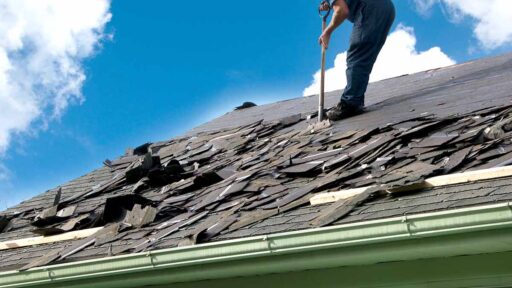
Taking Action: Fixing the Roof Leak
The appropriate repair method depends on the leak’s source and severity. Here’s a breakdown of common fixes:
Shingle Repair:
For minor damage, replace individual shingles using roofing nails and sealant. Ensure you use shingles that match your existing roof in type, size, and colour. This is particularly important in Canada, where extreme temperature fluctuations can affect different shingle materials differently.
Cost: $30 – $50 for materials to repair a small area.
Flashing Repair:
Replace damaged flashing or reseal it using roofing cement. Pay special attention to chimneys, vents, and roof edges. In Canadian climates, these areas are particularly vulnerable to ice dam formation, which can exacerbate leaks.
Cost: $20 – $100 for materials, depending on the extent of repair.
Vent and Pipe Seal Repair:
Replace deteriorated rubber boots around vent pipes. In colder regions, ensure you’re using cold-weather rated materials that can withstand freeze-thaw cycles. Use high-quality roofing sealant designed for your specific roof type and climate conditions.
Cost: $10 – $30 for sealant and replacement boots.
Patching Small Holes:
For tiny holes, apply roofing cement under shingles and seal exposed nail heads. Use a patch for slightly larger holes, covering it with roofing cement. Ensure the patch material is compatible with your existing roofing to prevent future issues. This method is part of how to repair roof leak problems efficiently.
Cost: $15 – $25 for patching materials.
Major Roof Damage:
Extensive leaks or structural damage often require professional intervention. A full roof replacement may be necessary for older roofs or widespread issues. In Canada, where severe weather is common, a full replacement might be more cost-effective in the long run for significantly damaged roofs.
Cost: $5,000 – $15,000+ for professional roof replacement, depending on size, materials, and regional labour costs.
According to the Canadian Roofing Contractors Association, approximately 60% of roof leak repairs are best left to professionals to ensure proper resolution and maintain warranty coverage.
Final Thoughts
Roof leaks in Canada can damage your home. Early detection and professional repair are key. Regular maintenance can prevent leaks and extend your roof’s life. By prioritizing roof care, you protect your investment and keep your home safe. Knowing how to repair roof leak issues, or when to call a professional, ensures that your home remains protected from the elements.
